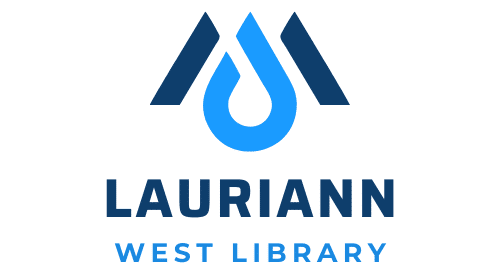The digital era continues to revolutionize numerous sectors with the integration of advanced technology. And in the realm of education, the potential application of blockchain technology is becoming a focal point for educators, students, and institutions alike. Blockchain, an ingenious technology that has primarily been associated with the financial sector, is steadily transmuting into a tool capable of transforming the education system. Arguably, one of the most significant potential applications lies in the realm of credentialing. But what exactly is blockchain, and how can it benefit students, educators, and institutions in the credentialing process?
Understanding Blockchain in the Context of Education
To understand how blockchain can revolutionize the education system, particularly the credentialing process, it’s essential first to grasp what the technology entails. Blockchain is primarily a system of recording information in a way that makes it difficult or nearly impossible to change, hack, or cheat the system. A blockchain is a digital ledger of transactions, duplicated and distributed across the entire network of computer systems on the blockchain. As such, it promises enhanced security, transparency, and efficiency.
Also to see : How Can Telepsychiatry Improve Access to Mental Health Care?
In the realm of education, blockchain technology can serve as a secure, decentralized, and unalterable repository for educational data. This could range from test scores and transcripts to achievements and credentials. The ultimate goal is to create a student-focused system that fosters trust, lessens bureaucratic burdens, and facilitates lifelong learning.
Blockchain Technology and Secure Credentialing
Credentialing in the educational context refers to the process of establishing the qualifications of licensed professionals, organizational members, or an organization, and assessing their background and legitimacy. Traditionally, this process is manual, time-consuming, and susceptible to errors and falsification. However, with the integration of blockchain technology, credentialing can be transformed into a smart, efficient, and secure process.
Also to discover : How to Develop a Solar-Powered Smart Home System?
By storing credentials on a blockchain, educational institutions can create an immutable record of student achievements. These records are permanently embedded in the blockchain, resistant to alteration, and can be accessed only by authorized individuals. When a student needs to share his/her credentials, instead of waiting for the institution to mail physical copies, he/she can simply provide a digital key to the requesting party. This digital key will enable a secure access to the records, which can then be verified against the data on the blockchain.
Moreover, with blockchain technology, records are not stored centrally but distributed across a network of computers, reducing the risk of data loss or corruption. This brings a new level of security to the credentialing process, which is of paramount importance in an age where data breaches and identity theft are frequent occurrences.
Enhancing the Learning Process Through Blockchain
Apart from credentialing, blockchain technology can also enhance the learning process by offering personalized learning pathways based on verifiable records. This method can help identify individual learning needs, preferences, and achievements, allowing for a more personalized and effective learning experience.
Blockchain can facilitate the shift from institution-centric learning models to learner-centric ones. It can help students take charge of their learning process, allowing them to showcase their progress and achievements confidently and transparently over time. It can also serve as an excellent tool for lifelong learners, as it can hold a comprehensive, permanent record of all learning achievements, regardless of where and when they occurred.
The Future of Blockchain in Educational Institutions
While the application of blockchain in education is still at a nascent stage, its potential benefits and impacts are enormous. It can streamline administrative processes, reduce costs, enhance data security, promote transparency, and foster student-centric learning models.
But, like all transformative technologies, blockchain also brings challenges. These include technological complexity, lack of standardization, legal and regulatory issues, and the need for institutional and societal readiness. As such, the adoption process will require thoughtful planning, stakeholder engagement, legal and regulatory considerations, and ongoing research and development.
For now, blockchain promises a more transparent, secure, and efficient future for education. As technology continues to evolve and mature, students, educators, and institutions will continue to explore and unlock the immense potential of blockchain in education. While the journey ahead may be complex, the rewards could be transformative, fostering a digital, learner-centric, and lifelong learning model that benefits all stakeholders.
Smart Contracts and Blockchain Education
The implementation of blockchain technology in education is not limited to secure credentialing and better learning processes. Smart contracts, another aspect of blockchain technology, can significantly transform the way educational institutions operate.
Smart contracts are self-executing contracts with the agreement between buyer and seller being directly written into lines of code. The code and the agreements contained therein exist across a distributed, decentralized blockchain network. In the context of education, smart contracts can automate processes such as admission, registration, fee payment, and even grade allocation.
Consider the admission process, for instance. Typically, prospective students have to fill out lengthy forms, submit documents, and go through several validation processes. With smart contracts, however, these processes can be automated. A prospective student fills out a digital form, and the blockchain-based system will verify the data, check eligibility criteria and, if met, confirm the admission. This method not only streamlines the process but also eliminates the possibility of human error.
In terms of fee payment, smart contracts can ensure that payments are made on time and that discrepancies are handled efficiently. If a student fails to pay the fees by the due date, the smart contract can automatically send a reminder or even apply penalties as per the institution’s policy.
Furthermore, smart contracts can help with grade allocation and transcript generation. Upon the completion of a course, the system can automatically calculate grades, generate transcripts, and update the student’s record on the blockchain. This level of automation reduces administrative workloads and facilitates the timely release of academic records.
The potential of smart contracts in the education industry extends even further. They can be used for staff recruitment, payroll management, procurement, and even in the management of research grants.
Conclusion: Shaping the Future of Higher Education
As we move further into the digital era, the integration of blockchain technology into the education system is becoming increasingly important. From secure credential verification and record keeping to smart contracts and personalized learning pathways, blockchain has the potential to revolutionize the education sector.
The use of blockchain for data sharing and data storage ensures that educational data remains secure, transparent, and immutable. This not only enhances data security but also promotes trust among students, educators, and institutions. The ability to easily share and verify digital credentials can streamline the credentialing process, making it more efficient and less prone to errors or fraud.
Moreover, with blockchain education, the shift from institution-centric to learner-centric models becomes feasible. Students can take control of their learning process, showcasing their progress and achievements confidently. Educational institutions can automate numerous processes, reducing administrative burdens and enhancing efficiency.
Yet, the journey towards a blockchain-based education system is not without challenges. Technological complexity, standardization issues, and legal and regulatory hurdles need to be addressed. Stakeholders will need to engage in thoughtful planning, ongoing research, and development to fully realize the benefits blockchain can bring to the education sector.
In summary, blockchain technology offers a promising future for higher education, promising to transform the way we approach learning, credentialing, and educational administration. As we continue to explore and harness this potential, we are paving the way towards a more transparent, secure, and efficient education system.











